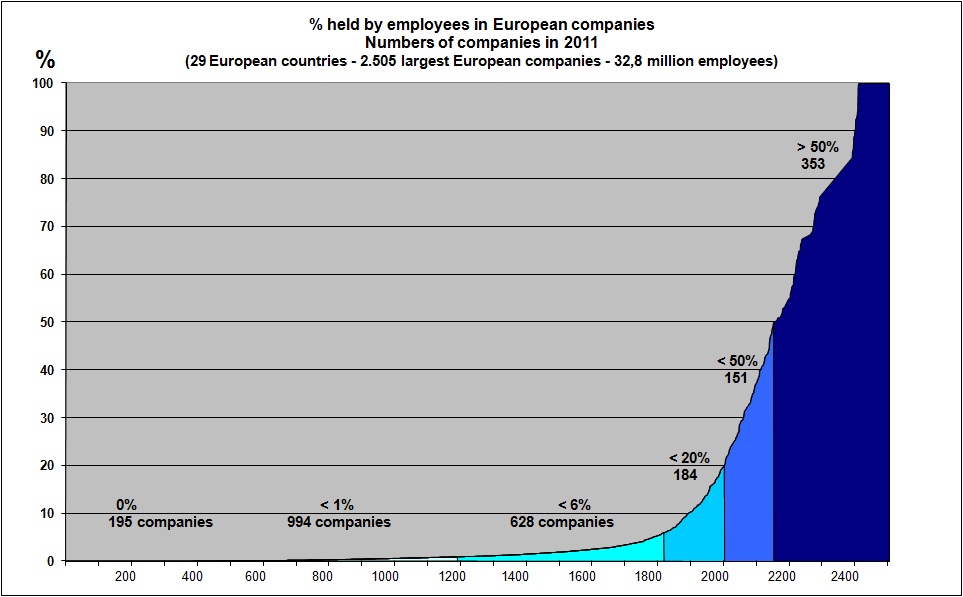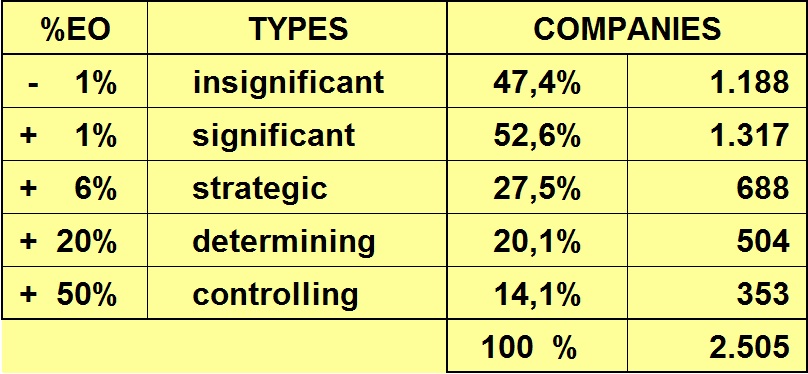|
TYPOLOGY
OF EMPLOYEE SHARE OWNERSHIP
Employee
share ownership starts with one share held by one employee
and it can go to 100%.
It
can be through shares or through membership (for
instance in workers' cooperatives). It can be direct
or indirect, through dedicated legal vehicles, as
it is the case for any other investors.
Even
when looking at largest companies, it is remarkable
that all situations exist, from 0 to 100%.
The
following graph gives the picture of all 2.500 largest
European companies, by order of employee share ownership
rate, from 0 to 100%. You don't see any fetish number
appearing: 51%? 25%?... - No steps, it is a continuum.

Based on empirical and statistical observation,
a typology of employee share ownership can be identified:
Up to 1% employee share ownership appears to be insignificant
or embryonic, over 1% it is becoming significant,
over 6% it is strategic, over 20% it is determining,
and over 50% it is controlling.
Of
course, here is a link with corporate governance
issues. The higher the share held by employees in
the ownership structure, the higher employee share ownership
involvement in corporate governance. However, nothing's
automatic here. In some cases you can have a say
even with 1%, while in other cases you don't have
any say even with 100%
It
is remarkable that employee share ownership appears to
be strategic, determining or controlling, not only
in small and medium sized enterprises, but even
in a high number of the largest European companies,
as can be seen in the following table, based on
the 2.500 largest European companies (employing
33 million people in 2011):

Detailed information can be found in the Annual
Economic Survey of Employee Ownership in Europe
|